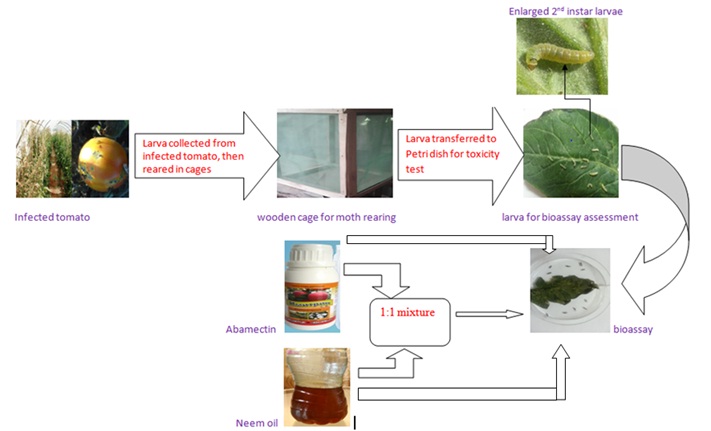Document Type : Original Research Article
Authors
Chemistry Department, College of Natural and Mathematical Sciences, University of Dodoma, Tanzania
Abstract
Tomato leafminers, Tuta absoluta pose a control challenge against dozens of chemical pesticides including abamectin as a result of increase in resistance with time. This study aimed at improving the field performance of abamectin using crude neem oil. The oil was obtained from the healthy neem seeds by cold pressing method. A total of 10 larvae were used in each bioassay experiment. Abamectin at 1000 ppm caused corrected mortality of 79% and its concentration that kills half of the experimental larvae (LC50) was 363 ppm. The crude neem oil at concentration of 2500 ppm caused corrected mortality of 61% with LC50 at 1089 ppm. The 1:1 mixture of abamectin and crude neem oil (without heating) at concentration of 1000 ppm gave 83% as highest corrected mortality and LC50 at 251 ppm. The findings from bioassay experiments revealed that, both neem oil and abamectin are potential pesticides; however their performance was even high after mixing. It was the synergism effect that gave the mixture high performance.
Graphical Abstract
Keywords
Main Subjects


